I have been quite silent over the last couple of months. I was focused on the next evolution of my Ubuntu based docker-traefik server. If you have been following my site, you may know that I have been using Ubuntu server as the base for my media and web server since 2010. That still remains the case.
But, with this next evolution, I moved my home server to a data center and was looking for easier way to backup, restore, and manage my server. Enter a "hypervisor". But the key question was, Proxmox vs ESXi and which hypervisor to pick.
In this post, I will document what I learned and why I picked Proxmox VE over VMware ESXi, for my personal non-enterprise Docker-Traefik Ubuntu homelab. While there is relevant information here for enterprise users, this post is targeted for beginners and home/small business users. Another point to note is, I am by no means an expert, and this ESXi vs Proxmox comparison is based on research and experimentation for my homelab.
Table of Contents
- What is a Hypervisor?
- Basic Information on Proxmox and ESXi
- Proxmox vs ESXi Comparison
- Frequently Asked Questions
- For my homelab, Proxmox or ESXi?
- For my business, Proxmox vs VMware ESXi?
- Can I remove the Proxmox nag screen?
- VMware ESXi free vs Proxmox free - which one is better?
- Is Proxmox a Type 1 hypervisor?
- Can I move my VMs from ESXi to Proxmox?
- Should I switch from ESXi to Proxmox?
- I have a small budget, should I get Proxmox or ESXi subscription?
- Concluding Remarks
What is a Hypervisor?
A hypervisor is a virtualization technology that creates and run virtual machines. The system on which the hypervisor runs is called a host and the virtual machines are called guests. For the purposes of this post, this short explanation is sufficient. For more details, you may refer to this Wikipedia article.
In the past, I have written several articles on VirtualBox. We have also covered the differences between Docker and VirtualBox. So how are Proxmox or ESXi different from VirtualBox?
This is where types of Hypervisor comes in.
Types of Hypervisor
Hypervisors allow running guest operating systems in isolation from the host operating system, while allowing the guests to use the host's hardware resources. There are two main types of hypervisors: Type 1 and Type 2.
Type 1 Hypervisor
A Type 1 or baremetal hypervisor is a lightweight virtualization operating system that runs directly on the host hardware. This operating system then allows managing one or several baremetal servers (nodes), each with one or more virtual machines.
Few common examples of Type 1 hypervisor include: Proxmox VE, VMware ESXi, Microsoft Hyper-V, and Citrix/Xen Server.
Type 2 Hypervisor
As depicted in the picture above, in a Type 2 Hypervisor, the virtualization engine runs on top of a host operating system like most computer programs/apps. The virtualization engine then allows creating isolated guest machines.
Few common examples of Type 2 hypervisor include: Oracle VirtualBox, VMware Workstation, and Microsoft Virtual PC.
Type 1 vs Type 2 Hypervisor
Unlike Type 2 hypervisors which require a base operating system, Type 1 hypervisors like ESXi or Proxmox VE typically are lightweight operating systems. Type 1 hypervisors typically have no Desktop Environments and are accessible only a Web Interface and SSH. [Read: 10 best SSH Clients for Windows: free alternatives to PuTTY]
A type 1 hyeprvisor's overhead and maintenance after initial setup are quite less compared to a full blown base operating system in a Type 2 hypervisor (eg. VirtualBox on Ubuntu Server).
After initially setting my first Proxmox server couple of months back, I am yet to do perform any kind of major maintenance activity on the host.
The disadvantage of a Type 1 hypervisor is that, since there is no desktop environment you typically don't/can't use the host as a workstation. Therefore, Type 1 hypervisors are great for rack installs or hosts that are located in a datacenter.
Hence, my recent move from a server hardware at home to a rented dedicated server running in a datacenter, was a perfect time to investigate Type 1 hypervisors.
Basic Information on Proxmox and ESXi
Now that we all know what a hypervisor is, let us look at some of the basics of the virtualization technologies in contention here: ESXi vs Proxmox.

VMware ESXi and Proxmox are the most commonly used virtualization solutions for homelab use.
What is ESXi?
ESXi is a core part of the vSphere virtualization suite made by VMware Inc (a part of Dell Technologies). VMware is a common name in the business and even large corporation world for virtualization needs.
ESXi is the virtualization server and a Type 1 hypervisor. To install and manage virtual machines on top of the ESXi hypervisor you will need a vSphere web client software. vSphere web client is an HTML5 web-based management portal that connects to ESXi servers for management of virtual server.
In addition, there is vCenter server, which is part of the vSphere suite. vCenter server is a centralized management application that allows managing both virtual machines and ESXi hosts, via the vSphere web client. vCenter is typically used when there are several ESXi hosts and includes several enterprise-level features such as high-availability, update manager, etc.
Full feature list of ESXi can be found on VMware's website.
Is ESXi free?
ESXi is available as a part of the free vSphere hypervisor. But the ESXi free license has certain limitations compared to the paid ones.
VMware ESXi Free uses the same installation media as the paid version and has all the features enabled for 60 days. Beyond the 60 days, you can enter the ESXi free license key (obtained at the time of download) or a paid license key to continue using the hypervisor.
VMware ESXi Free Limitations
ESXi free version cannot be managed via vCenter server. It also has resource limitations such as a maximum of 2 physical CPUs in the host machine, a maximum of 8 vCPUs in the virtual machine, and no support from VMware.
But you can run limited VMs on ESXi free with no limit on memory and number of cores per CPU.
What is Proxmox?
Proxmox VE (Virtual Environment) is an open-source platform that supports both small scale and enterprise-level virtualization. It is based on Debian Linux and combines two virtualization technologies under one platform: full virtualization with KVM and lightweight Linux containers (LXC).
Proxmox VE (PVE) has a built-in web interface that allows you to easily manage VMs and containers and associated resources (firewalls, network, storage, backup, etc.) on multiple nodes and clusters. Unlike ESXi, which requires vSphere web client for management, Proxmox VE is an all-in-one tool.
PVE's enterprise-class feature list is exhaustive and state-of-the-art. The video below shows a quick overview and setup of Proxmox VE 6.
Is Proxmox free?
Proxmox Virtual Environment is open-source and free software published under GNU AGPL, v3. This means Proxmox is 100% free for downloading, using, and sharing. A Proxmox subscription is not required. However, with Proxmox free you may see notifications encouraging you to subscribe.
Proxmox Free Limitations
Both paid and free Proxmox versions provide the same feature set. No differences what-so-ever. But if you choose to subscribe, you get access to the enterprise repository and technical support.
I am on the Proxmox free license with the community repository and it still feels very stable. Should you choose to get a Proxmox subscription, the cheapest license (Community Version) is less than $100 a year and several hundred dollars cheaper than an ESXi subscription.
Proxmox vs ESXi Comparison
With the basics of hypervisor and background information on both ESXi and Proxmox explained, let us move on to comparing Proxmox and ESXi. I briefly touched on the cost of Proxmox and ESXi, but will look at it in a bit more detail below.
1. Source Code and License
Let's tackle the easy part first.
| VMware vSphere ESXi | Proxmox VE |
|---|---|
| Closed source and proprietary. | Open-source. The source is free to use, share, and modify under GNU AGPL, v3. |
I am not going to argue that one is better over the other. It is a matter of personal preference. If you want to support an open-source project go with Proxmox VE. Otherwise, the type of source code really does not matter to a typical user.
But what is important to note is that, because Proxmox is open-source there will be little to no licensing issue while implementing Proxmox. vSphere on the other hand, has several different license types, which complicate its implementation and maintenance due to potential conflicts and subscription management.
2. Cost of Proxmox vs ESXi
This is a big one for most people and it was for me as well. As mentioned previously both VMware vSphere ESXi and Proxmox VE have free versions. Both have paid versions too.
Let's assume you you are not satisfied with Proxmox free license, here are the various Proxmox subscription options available to you.
The cheapest Proxmox subscription (Community Version), gets you technical support from Proxmox and access to the enterprise repository.
On the other hand, cheapest vSphere ESXi subscription costs close to $575 for a year.

Subscription costs are significantly higher for VMware vSphere ESXi than Proxmox. This can quickly climb up into several thousands of dollars if you have several hosts and use vCenter. For big businesses, especially enterprises, this may be affordable and many folks who have been using VMware ESXi swear by its robustness.
However, Proxmox has come a long way. Today the features and support offered by Proxmox rivals VMware's. The increasing licensing costs, hardware requirements, and operational costs are pushing customers to look at ESXi alternatives such as Proxmox VE.
2. Proxmox free vs ESXi free
Comparison of Proxmox free to ESXi free was the key question for me as I was more interested in a hypervisor for personal use, experimentation, and learning.
| VMware ESXi Free | Proxmox VE Free |
|---|---|
| 60 day trial available. Limited to 2 physical CPUs and 8 vCPUs per VM. ESXi free license is also quite limited when it comes to clustering, backups, storage backends, and high availability. | Virtually no difference in functionality between Proxmox free and paid. Free version is limited to Community Repo, which is still very stable. Nearly all of ESXi's paid features (clustering, high availability, live migration, etc.) are available for free on Proxmox. |
| ESXi free cannot be managed using vCenter. No support from VMware. | No support from Proxmox but excellent documentation and online user community. |
For me, Proxmox free is clearly better than vSphere ESXi free version. This was one of the most important reasons for me to pick Proxmox (again, remember that this is for my personal use).
In addition, free version of ESXi does not support REST API, which is needed if you are interested in automating deployments (eg. using Ansible). You will need to get a VMUG membership to achieve achieve this. In contrast, Proxmox VE API is available in the free version.
4. Features
Both Proxmox and ESXi have an exhaustive feature set. But there are some differences.
| vSphere ESXi Features | Proxmox Features |
|---|---|
| ESXi features list | Proxmox features list |
| For homelab, Proxmox' features are more than enough if not better than ESXi. | For businesses, I would first look into Proxmox's features and see if they fit my needs prior to looking considering VMware. |
Below are some explanations, examples, and comparison of features between Proxmox VE and vSphere ESXi.
Proxmox vs vSphere Web Client UI
Proxmox has come a long way over the years to Rival ESXi. A few options are still missing in Proxmox compared to ESXi, such as linux PAM user management from the WebUI (you can still create Proxmox VE authenticated users - non-Linux users).
GUI options were significantly improved in version 6, but Proxmox server still has come catching up to do compared to vSphere ESXi and some advanced configurations still require commandline work.
Network Setup
Network setup on Proxmox was cumbersome. When I created Ubuntu Virtual Machine, there was minimal GUI options provided, as shown in the image below.

My server provider required manually specifying the network details. I could not do this during VM creation. When I booted Ubuntu, network DHCP auto configuration failed. I had to do some trial and error to figure out the correct way to specify the network. I had to provide the netmask and gateway during Ubuntu setup.
Being a novice in networking, it took a bit of work for me to figure this out from the information that my provider shared with me. In contrast, ESXi allows advanced configuration of networks.
Storage Backends and Sharing
Storage support, in my opinion, is significantly better in Proxmox compared to ESXi. For example, Proxmox supports more types of storage-backends (LVM, ZFS, GlusterFS, NFS, Ceph, iSCSI, etc.). In addition, Proxmox also support Linux containers (LXC) in addition to full virtualization using KVM.
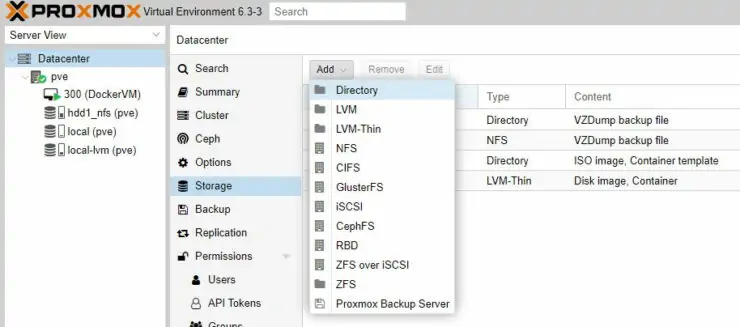
Moreover, storage backends are automatically shared between all nodes added to the cluster. ESXi, on the other hand, requires that storage be configured on each node manually. While I did not personally experience this during my experiments, some users have reported that ESXi would not automatically reconnect to NFS shares after the NFS host fails/restarts.
Linux Containers Support
If you have not heard of them, LXC containers are great. They are more integrated with host system, while also providing a level of isolation. But, they are different docker containers.
LXC containers are very small in size, boot very fast, and there are several pre-made container images available from Turnkey Linux (file servers, Jellyfin, torrent servers, VPN, WordPress, and more).

For personal/homelab use, LXC container support is a great benefit to have as you can circumvent Docker and just use LXC containers to run most of the homelab apps. With LXC containers, backing up and restoring containers also become easier. You can even take snapshots and restore them if something goes wrong. In my opinion, this is a significant benefit of using Proxmox over vSphere ESXi.
On the flip side, VMware vSphere version 7 and up will have support for Kubernetes. This is being touted as a big step in terms of feature evolution.
Virtual Machine Image Formats
Generic Linux KVM used by Proxmox server supports more VM image formats such as HDD, QCOW, QCOW2, QED, VDI, etc. This also allows running pretty much any operating system in the guest VM and improves portability significantly.
In contrast, VMware ESXi uses proprietary virtualization technology that does not support VM image formats listed above for Proxmox. For the same reason it also support fewer operating systems.
Other Features
VMware's ESXi still has several advanced features such as fault tolerance, live network changes, and more. ESXi also allows device passthrough via GUI.
On Proxmox, to pass my 3 TB HDD through to my Ubuntu VM, I had to do some commandline work. I will cover this in a separate tutorial. Another nice benefit of Proxmox is the built in support for LetsEncrypt SSL certificates.
5. Hardware Requirements
| VMware ESXi Hardware | Proxmox VE Hardware |
|---|---|
| Full list of vSphere 7 ESXi hardware requirements | Full list of Proxmox hardware requirements |
| Any Intel VT-x or AMD RVI x64 processors with at least two cores and 4 GB RAM (additional ram needed for VMs). Checkout the VMware compatibility guide. | Any Intel EMT64 or AMD64 with Intel VT/AMD-V capable motherboard with at least 2 GB RAM (additional ram needed for VMs). |
| VMware ESXi has been evolving quite rapidly with the downside that hardware becomes obsolete and unsupported after a few years. As it is, the hardware requirements are higher for vSphere ESXi. | Proxmox hardware requirements are quite modest compared to VMware's vSphere ESXi. It can run on older hardware and be installed easily from ISO, which are perfect for a homelab use. |
For testing purposes, Proxmox hardware requirements can be even lower. Proxmox VE can also be installed as a guest VM on an existing virtualization server that supports nesting. So you have the option to get your hands dirty, learn, and then decide between Proxmox and ESXi.
Proxmox can also be installed on a custom-partitioned Debian 64-bit operating system. So you even have the option to use your hardware as a workstation with a desktop environment, while running Proxmox server on it.
Proxmox can run on pretty much any hardware, even those with CPUs that does not support virtualization. You cannot run KVM virtual machines on such hardware but you can run LXC containers, which is a great benefit to those that want to reuse older hardware.
Contrarily, ESXi requires newer hardware and CPU-extensions and with each version upgrade some of the older hardware lose official support.
6. Ease of Setup
| VMware ESXi Installation | Proxmox VE Installation |
|---|---|
| Details on installing and setting up ESXi | Proxmox installation and configuration |
| Several installation options available for ESXi, including installation via ISOs, PXE booting, vSphere Auto Deploy, and Installer Scripts. | Proxmox can be installed from ISO images. |
VMwave ESXi offers a lot more installation options, which are create for large clusters and enterprise use. For a homelab use, I could install it from ISO image within minutes.
I plan to convert my Ubuntu Home Server to Proxmox. But I also use my Intel NUC home server as a workstation. This is where the ability of Proxmox to be installed on custom partitioned Debian OS comes in handy. [Read: My Smart Home setup – All gadgets and apps I use in my automated home]
7. User Friendliness (especially for beginners)
| ESXi Easy of Use | Proxmox Ease of Use |
|---|---|
| vSphere web client is quite intuitive and provides advanced configuration via GUI. | Proxmox GUI is still evolving and lacks some advanced configuration options via GUI. |
Proxmox made a huge jump in GUI configuration options in version 6. But some of the operations still required commandline work. My first experience with Proxmox was with Version 6.3, which is quite recent. And I have previously used VirtualBox quite a bit. Even with this experience I had a steep learning curve. It took me a few days to find my way around Proxmox and understand some of the behaviors.
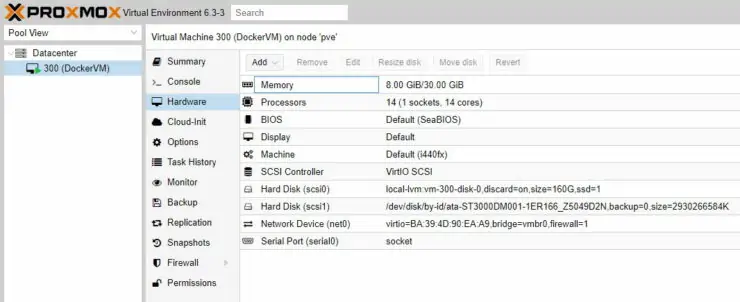
On the flip side, VMwave's vSphere web client is quite advanced, yet intuitive. But, coming from a bare Ubuntu Server world, it also felt quite locked down. On Proxmox I had a little bit more control over what I could do via commandline and mess with the system if I chose to.
In addition, coming from Ubuntu, the base Proxmox OS (Debian) was a familiar territory and easy to use. In comparison, VMware uses its own proprietary Linux and management tools. This requires additional time to learn. Unlike Proxmox, which is all-in-one, to manage multiple ESXi hosts you will need vCenter Server and it needs it own host or a guest VM.
8. Reliability and Flexibility
Mismanagement of any hypervisor can bring the whole infrastructure down. Obviously, this applies to both Proxmox and EXSi. Therefore, reliability and flexibility are important not only from the feature standpoint but also from failure recovery standpoint.
| VMware ESXi | Proxmox Virtual Environment |
|---|---|
| Expiring licenses can be an issue for reliability. | Licenses not a problem for the Proxmox free version. |
| Needs a master node for reliable clustering and HA. | Any node in Proxmox can manage a cluster, which is a nice flexibility to have in case the master node goes down. |
As mentioned previously, Proxmox's support for wider range of storage backends (NFS, CIFS, GlusterFS, LVM, mdadm, and more) also helps with cluster management.
VMware's vSphere ESXi is a successful product. No question about it. But in personal opinion, the complexity and costs may not be worth it for home lab or a small business.
9. Documentation and Community Support
Paid subscriptions to ESXi and Proxmox will allow you to use their technical support in case of a problem. But what if you are planning on using the free versions? The documentation and online community support are your best friends in this situation.
| ESXi Help | Proxmox Help |
|---|---|
| VMWare has very good online documentation. In addition, there is also VMware User Group (VMUG) which offers several more resources. | Proxmox VE Wiki has come a long way since its inception. |
| VMware also has certification courses for vSphere web client and ESXi. But these tend to cost several thousand dollars. | As far as I know, there are no certification or training courses for Proxmox. |
| VMware has an active vSphere Community - also has a section on ESXi. | Proxmox Forums are very active and helpful. |
While Proxmox has a great Wiki, sometimes it lags the development speed a little bit. At least this was my experience when I got started with Proxmox. I eventually found what I was looking for. But it was frustrating at times and needed a lot of patience to dig through information that is scattered around. But online forums, including Reddit, were very helpful.
With VMware, one thing to keep mind is that support often outsourced to call centers. This is not necessarily a bad thing but is also something to consider.
VMUG opens up several more possibilities. For the paid VMUG membership ($200/year) you get access to 1-year trial period for several VMware products, access to local groups, communities, discounted products, discounted training courses, and more. The catch is that it is available for non-production use only (perfect for homelabs).
Frequently Asked Questions
For my homelab, Proxmox or ESXi?
Go for Proxmox. Or, run it inside a VM and give it a try. Proxmox VE is a great open-source tool. It has been running stably for two months now without any hiccups.
For my business, Proxmox vs VMware ESXi?
I do not think you can go wrong with either ESXi or Proxmox. But, personally, I would try Proxmox first before beginning to invest in an expensive ecosystem.
Can I remove the Proxmox nag screen?
Proxmox shows a popup recommending free users to upgrade to a paid subscription. There are ways to disable this. But I am going not to comment on it here. I really don't mind it as it supports a project I use and believe in.
VMware ESXi free vs Proxmox free - which one is better?
In my opinion, Proxmox free is leaps and bounds better than ESXi free. As said before, Proxmox free is the same as the Proxmox paid version but without access to the enterprise repository and technical support. Community repository has been running stable for me and online community has been able to answer all my questions so far.
Is Proxmox a Type 1 hypervisor?
Yes, since Proxmox uses Linux Kernel-based Virtual Machines (KVM) for virtualization and converts the host operating system to a hypervisor, it is considered a Type 1 hypervisor.
Can I move my VMs from ESXi to Proxmox?
Yes you can. Proxmox has a VMware migration guide that can be helpful. Alternatively, you can also import the VMDK (virtual machine disk) from VMware ESXi onto a VM on Proxmox.
Should I switch from ESXi to Proxmox?
If you are a hobbyist or enthusiast or a small business looking save some money, sure yes. I would say try it out. If your professional life is tightly integrated with VMware then it is probably better to continue using VMware, which is still most commonly used virtualization solution by far in small and medium businesses.
I have a small budget, should I get Proxmox or ESXi subscription?
If your budget is about $200 a year then I would say use make use of the 60-day ESXi trial for testing and then subscribe to VMUG for homelab use. Alternatively, you could still choose to go with Proxmox free and if you end up liking it, upgrade to the Community edition for about $100 a year to support the project and get access to the enterprise repository.
Concluding Remarks
Proxmox VE has gotten simpler to use over the years. But that has not been at the cost of features. It continues to evolve. I have been using it pretty much every day and I started from scratch just over 2 months ago. So far I love it.
On my new Proxmox server in a data center, the only thing I would change is to probably RAID the SSD that Proxmox is running on to minimize failures/downtime. In addition, I will probably add additional nodes, with my Intel NUC home server being one of them.
VMware has a stronghold on large enterprise implementation and rightly so. Experiences may wary but vSphere ESXi does have a very positive opinion among its users. vSphere web client looks very polished, intuitive, and feature-full.
I have not done any major version upgrades on either Proxmox or ESXi. So I cannot really comment on that part, but doing so can be tricky as it can break things. There are several more Proxmox features that I can't wait to explore. Ceph distributed storage is one of them. For my homelab, I am glad that I went with Proxmox compared to ESXi.
I hoped to share what I learned about Proxmox and ESXi over the last few months to help newbies make a decision. If you have a point to share, feel free to leave a comment.

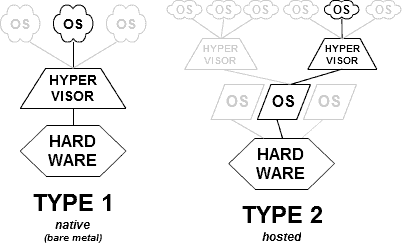
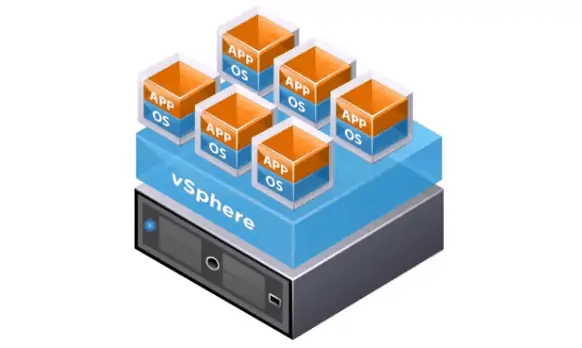
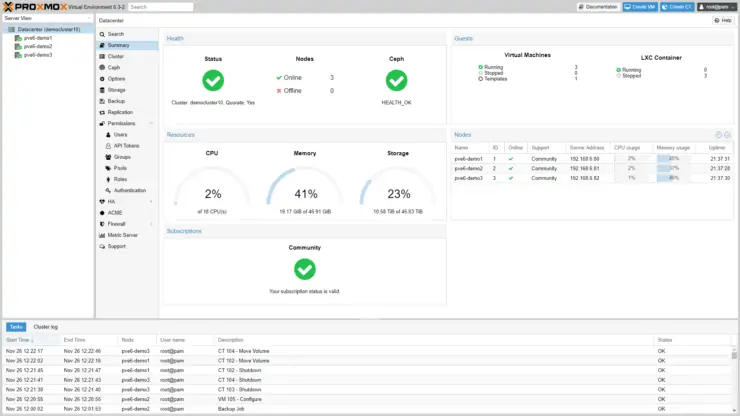
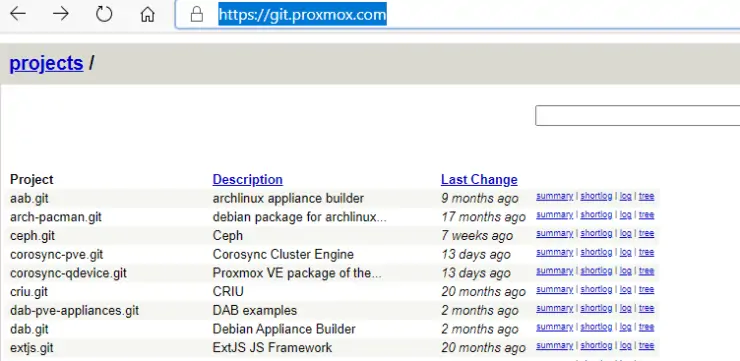


![Ultimate Docker Server: Getting Started with OS Preparation [Part 1] Docker Server Tutorials 1 OS Preparation](https://www.smarthomebeginner.com/images/2024/01/Docker-Series-01-Intro-and-OS-Prep.png)
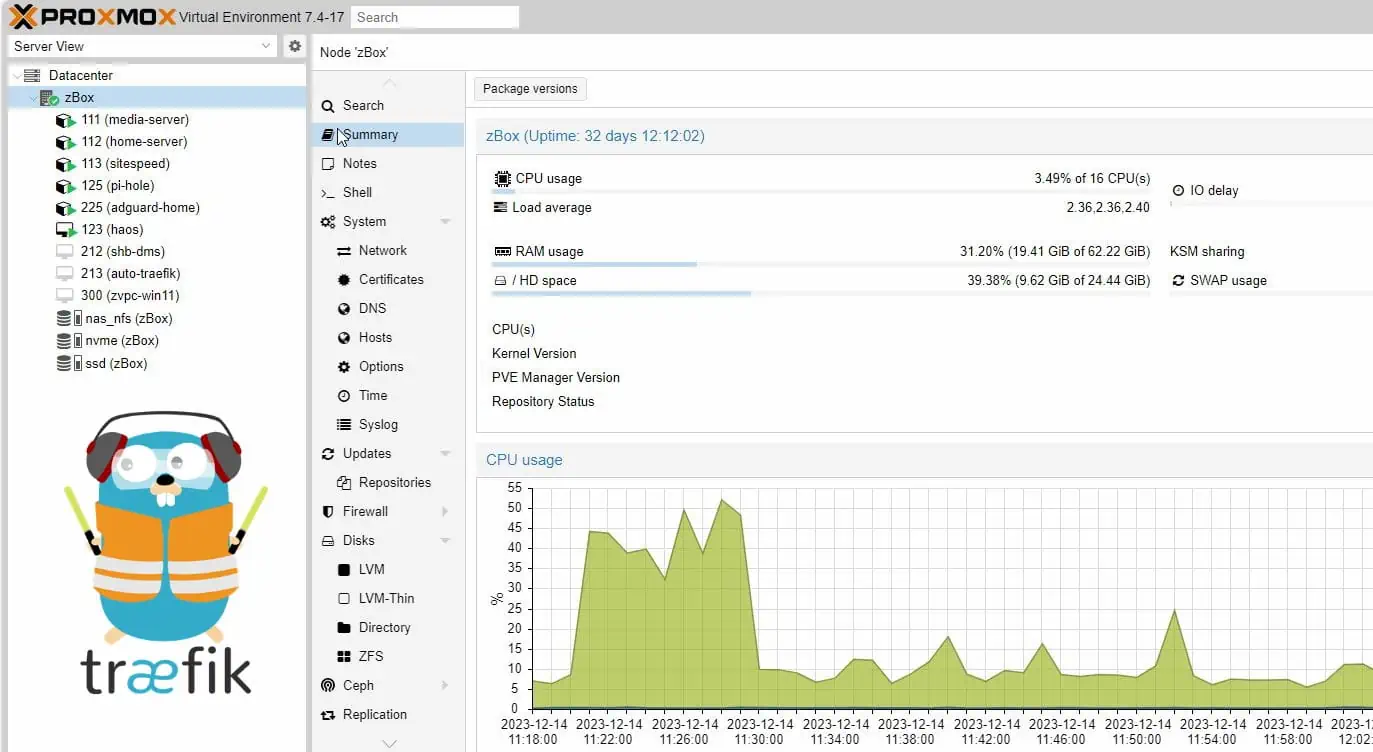

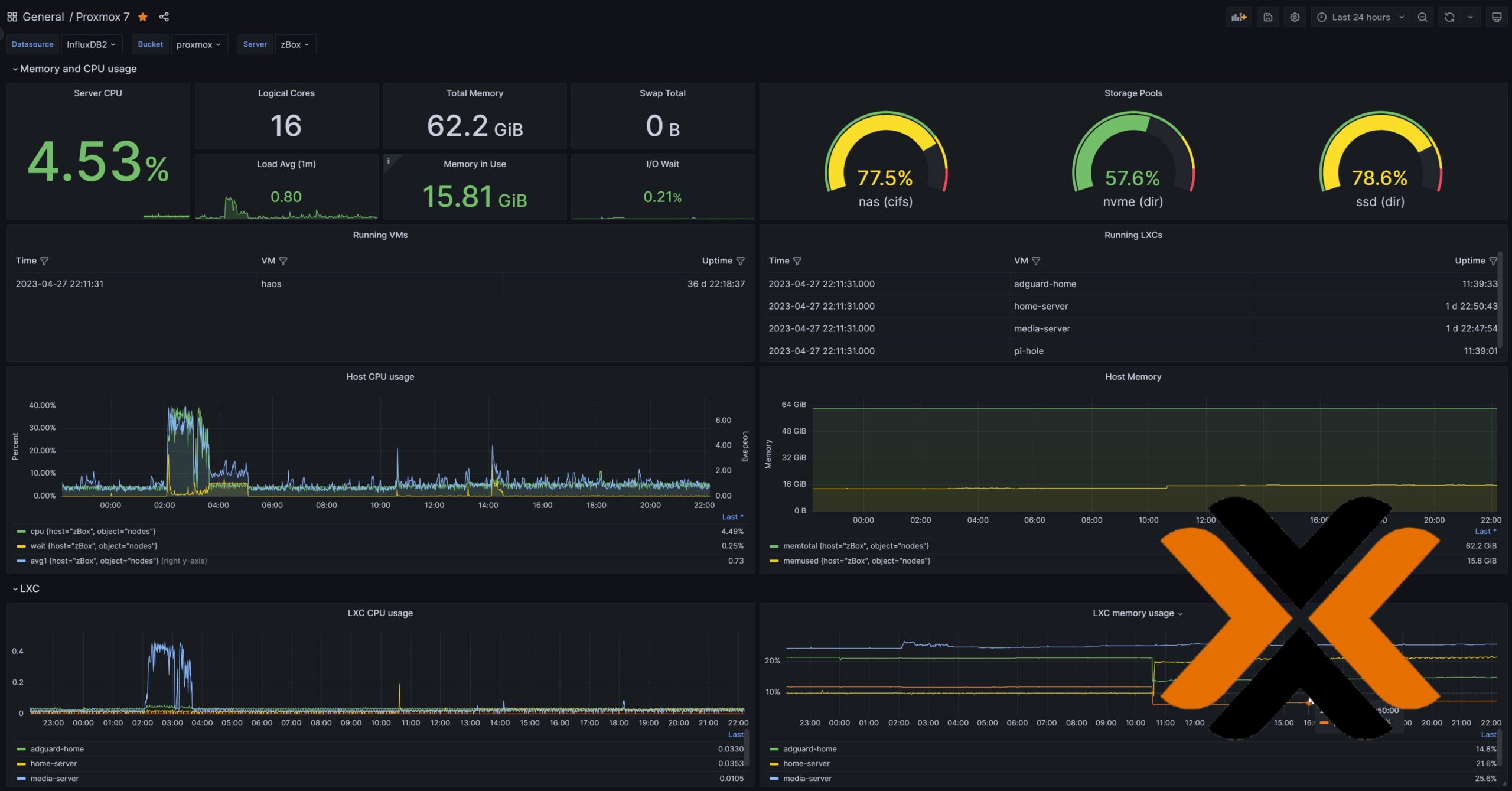
![5 Best Mini PC for Proxmox Home Server [2024] Best Mini PC for Proxmox](https://www.smarthomebeginner.com/images/2024/04/Best-Mini-PC-for-Proxmox.png)